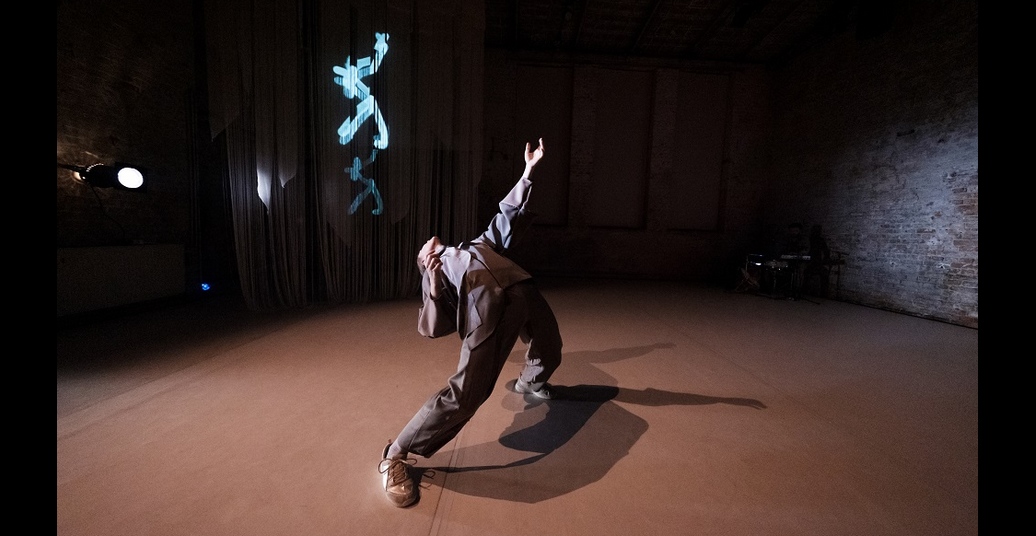In “K L O F. cyberographies of folk,” choreographer Irina Demina uses artificial intelligence to develop a new kind of folk dance: an attempt to reflect contemporary digitalized everyday life. The remount runs at DOCK 11 until 7 May 2023.
Irina Demina starts clapping in 3/4 time and the audience follows suit, establishing a rhythm together that sound designer Michelangelo Contini develops further on the drum. As he does, a video projection lights up the back wall of the stage. It shows approximately thirty trembling dancing stick figures executing different movement patterns, none of them easy to follow. Dancer Viktória Kőhalmi, her back to the audience, begins a dance that comes across as both familiar and strange. She repeatedly drops low to her knees, then springs back up. The way she holds her arms extended to the sides and the flexed foot that makes more than one appearance remind me of virtually every folk dance I know from a variety of (primarily European) regions.
There is, however, also something counterintuitive, almost robotic, about the dance sequence, which starts over from the beginning more than once. There are seemingly unintentional arm spasms and abrupt changes in direction, but they stay the same every time the phrase repeats. This strange quality mimics the twitching stick figures which are still staggering across the wall. As they disappear from the video projection, the dancer leans her body against the wall as if she is seeking support. For the first time she shows the audience her face, her unmistakable humanness. Yet her movements become choppier. She writhes across the floor as if trying to turn the world on its head. She balances on her shoulders, legs stretched into the air, or folds her body compactly together. Now, a new trembling stick figure appears on a curtain made of white threads; it moves every time Kőhalmi changes position. It quickly becomes clear that the dancer’s movements are being mapped onto the stick figure with some kind of motion capture program. The program, however, can’t always tell the difference between up and down. This is especially noticeable when the repeated dance sequence from the beginning of the piece appears again—this time as a duet between Kőhalmi and the stick figure. Sometimes the computer model accurately reproduces the dancer’s shapes, sometimes the interpretation is completely off-base.
The dance, which is referred to here as cyberography, is the result of a collaboration between Irina Demina and an artificial intelligence (AI). The AI was trained with video documentation of multiple folk dances from different regions with the goal of choreographing new, synthetic folk dances. Of the thirty resulting cyberographies danced at the beginning of the performance by an ensemble of stick figures, Demina interpreted one, transforming it into human movement. “It is a hybrid. It is a game. It is a wish.”
The steps that make up many folk dances originate in the typical, everyday movements of particular occupational groups and/or communities: from shooing away pestering flies to picking apples. Folk dances emerged with the intention to reflect lived reality. “K L O F. cyberographies of folk” represents an attempt to reflect back to us our contemporary daily lives, into which technology is densely interwoven, through a new kind of folkloric dance.
English translation by Cory Tamler
“K L O F. cyberographies of folk“ by Irina Demina (Premiere: 12 May 2022) is shown at DOCK 11 until 7 May 2023. Tickets under dock11-berlin.de.




